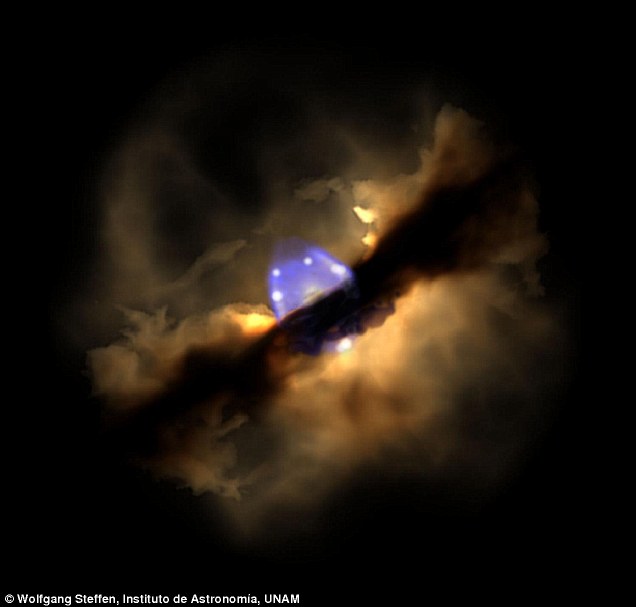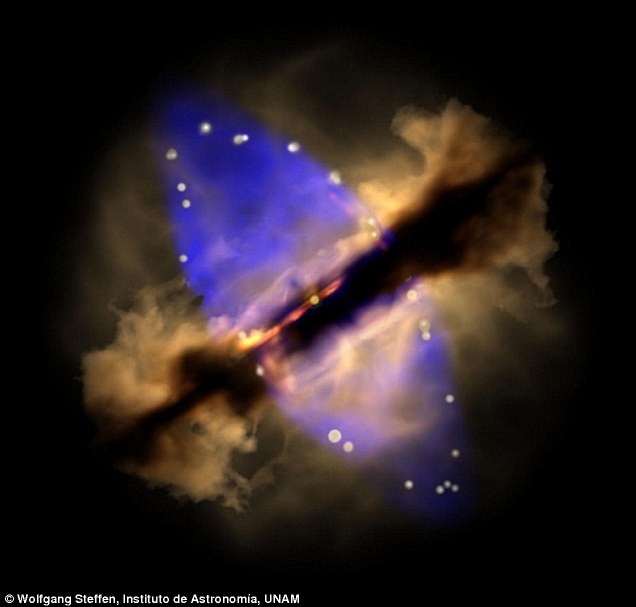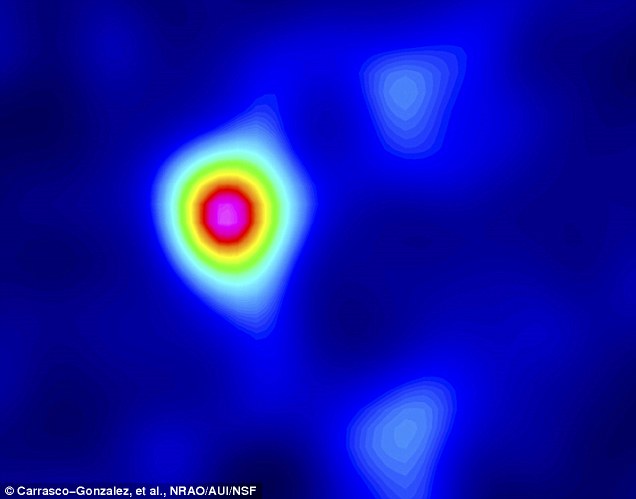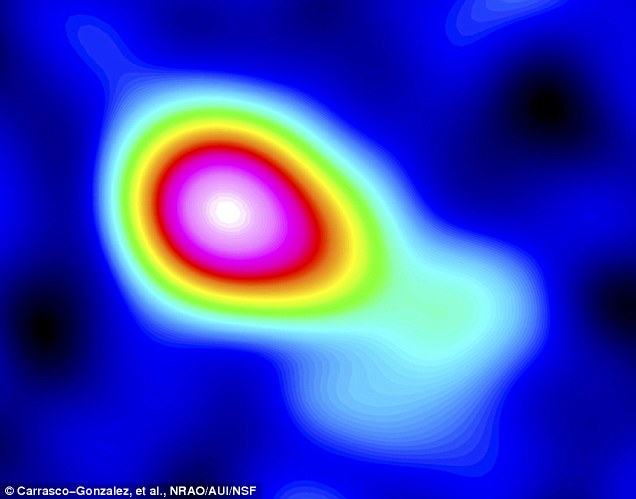The formation of the star is 300 times brighter than the Sun.
Astronomers have never seen such a strong stream of light come from the formation of a star in the universe.
Marvel at observing the formation of stars that are 300 times brighter than the Sun.
The light from this newly formed ' star ' had to travel through 4,200 light years to reach Earth . Despite that gap, scientists were able to observe the light emitted by this newly formed star. Because they have never seen such a strong stream of light come from the formation of a star in the universe.
Previously in 1996, astronomers had observed the light emitted by this new star, but when observed and photographed again in 2015, the difference was obvious.


The image reproduces the formation of the W75N (B) -VLA2 star, based on what astronomers have observed.The picture above is in 1996, the picture below is 2015.
This special star is called W75N (B) -VLA2 , it is 300 times brighter and 8 times larger than our Sun. Although this star is being covered by a dark cloud of cosmic dust, it is still unable to prevent the superheated internal energy region created by star formation, emitting radiation streams very strong purple.

 The radiation image recorded from this star shows its rapid development in the early stages.
The radiation image recorded from this star shows its rapid development in the early stages.
This is also the first time that scientists can monitor the formation of a new star, in the most complete and detailed way. In the image taken with radiation sensors in 1996 and 2015, we can see the development of the size of the hot air zone inside the cosmic dust belt.
 Simulate the process of star formation, when the hot air areas inside are pressed towards the poles.
Simulate the process of star formation, when the hot air areas inside are pressed towards the poles.
However, when developed to this stage, the cosmic dust belt will inhibit the development of hot air zones . Makes it impossible to expand horizontally anymore and begins to push the hot air up to the two poles. That is the first stage in the formation of a new star.
- The star is brighter than the Sun.
- Photo of the universe: The star is 150 times brighter than the Sun.
- The supernova is 20 times brighter than the Milky Way
- Detecting star clusters 30 million times brighter than the Sun.
- The star is 20 million times brighter than the sun
- The star is 10,000 times brighter than the Sun can prevent life from evolving
- Radiation stimulates star formation
- Detect extremely bright stars in the sky
- The giant galaxy is 12.5 billion light-years from Earth
- Giant stars are created from 'star nursery'.
- Our Milky Way galaxy is old, there is not enough gas to create a new star
- How are stars created?
 Van Allen's belt and evidence that the Apollo 11 mission to the Moon was myth
Van Allen's belt and evidence that the Apollo 11 mission to the Moon was myth The levels of civilization in the universe (Kardashev scale)
The levels of civilization in the universe (Kardashev scale) Today Mars, the sun and the Earth are aligned
Today Mars, the sun and the Earth are aligned The Amazon owner announced a secret plan to build a space base for thousands of people
The Amazon owner announced a secret plan to build a space base for thousands of people A shooting star, about to explode in the sky of Earth?
A shooting star, about to explode in the sky of Earth?  Image of a new star spewing gas loudly across the Milky Way galaxy
Image of a new star spewing gas loudly across the Milky Way galaxy  The 'deadly' truth about strange radio signals transmitted to Earth
The 'deadly' truth about strange radio signals transmitted to Earth  Scientists Stunned to Discover Star With Supersonic Tsunamis Three Times Higher Than the Sun
Scientists Stunned to Discover Star With Supersonic Tsunamis Three Times Higher Than the Sun  Death 11.5 Billion Years Ago Bombs NASA: A Chilling Prediction for Us
Death 11.5 Billion Years Ago Bombs NASA: A Chilling Prediction for Us  In 2024, the cosmic monster in the 13th century ancient text will return.
In 2024, the cosmic monster in the 13th century ancient text will return. 